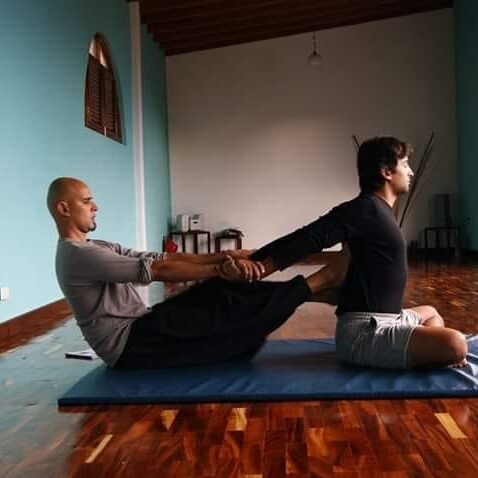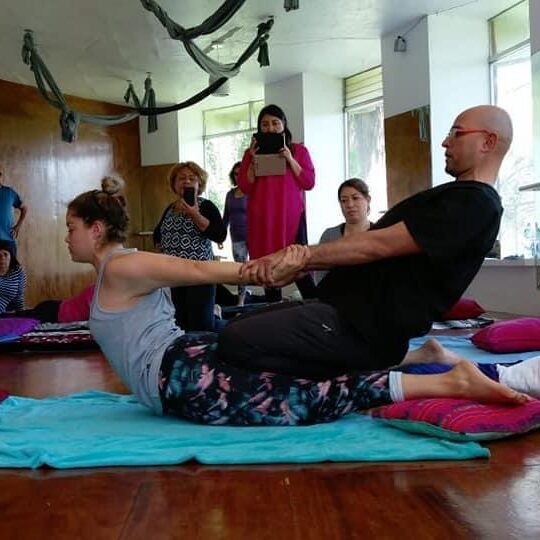Thai Yoga Massage, or informally as ‘the lazy person’s yoga’ – combines assisted yoga with acupressure techniques. The therapist will incorporate yogic stretching and Yoga Asanas movements as they knead and press muscles along the body’s energy lines with the hands, knees,elbows, and feet. Thai Yoga massage combines the principles of acupressure whereby the Sen is stimulated, which is said to balance the energy system in the body.
The passive stretching can also help to open up the body which can help increase flexibility and relieve tension within the joints and the muscles.

Sports massage is the more focused sibling of a deep tissue massage. The two massages are similar – firm pressure, focusing on muscles and connective tissue deep within the body. But with a sports massage, your therapist may incorporate stretching and the session may be targeted to a specific area of the body.

Deep tissue massage helps improve posture by addressing underlying tension and muscle imbalances in the body. It stretches and loosens tight muscles, improves joint flexibility through circulation, releases endorphins, and reduces tension and stress. These benefits lead to improved posture, better balance, and body coordination.
The therapist applies firm pressure using their hands, elbows, and forearms to affected areas, especially those in the neck, shoulders, and lower back. Chronic muscle pain can impede daily activities, but deep-tissue massage can help reduce pain and promote relaxation.

Thai massage, which originated in India, has been around for over 2,500 years. Originally regarded as a healing art, traditional Thai massage includes influences from both Ayurvedic and traditional Chinese medicine.
When you have a Thai Massage you are fully clothed while a practitioner uses stretching, pulling, and rocking techniques to relieve tension, promote relaxation, and improve flexibility.
Thai massage is focused on improving the flow of energy throughout your body.

Back, Neck and Shoulder Massage includes massage of the head (temples, crown, and scalp), neck (upper trapezius, sternocleidomastoid, and scalenes muscles), shoulders (rhomboids, deltoids, middle trapezius and rotator cuff muscles), back (quadratus lumborum, latissimus dorsi, and the erector spinae muscles), arms (triceps, biceps, coracobrachialis, brachialis, brachioradialis, and the extensor carpi radialis brevis muscles)and hands..It is entirely focused on the upper body.
Massage therapists will often use different techniques such as effleurage (long gliding strokes,), petrissage (kneading, repeated circular movements, cross fiber friction, , and tapotement (rapid and repeated striking of the body) to work the muscles in each of these areas, providing relief from tension and pain.

Deep yet gentle techniques for correcting unhealthy chronic tension patterns and structural imbalances this work combines current theories of neuroscience with therapeutic bodywork to ‘teach’ the client’s nervous system how to achieve and maintain ok the physiology of relaxation. It is used to re-educate and encourage me the nervous system to allow release rather than to resist it.
The therapist uses slow and deep pressure, motion, and traction to promote release and to retrain the neuromuscular circuits into a new healthy pattern. What makes Neuromuscular Release unique is the pattern, sequence, intent, and application of the strokes as they relate to the neuromuscular connection. It focuses on the part of the nervous system responsible for how we experience touch, including pain, and it is especially helpful for clients with chronic pain or anxiety.
